Orange residents provide input on long-range plan
| Published: 03-28-2025 5:13 PM |
ORANGE — Residents say they want to see investments in housing and infrastructure to bring more families and businesses to town.
Orange is developing a new long-range plan to guide activity, and a community engagement session was held at Ralph C. Mahar Regional School this week so people could share comments and ask questions about the various topics covered in the plan. Dozens of residents visited the school library to learn more and provide feedback.
“I’d like to see somebody have a vision for the future that is both economically and environmentally appropriate,” said Fred Heyes, a Long Range Comprehensive Plan Subcommittee member. “[The town] could use a balanced housing stock, and those words are very specific. And if you look at some of the reports that [the Franklin Regional Council of Governments] did, you’ll see that, in fact, if you just add more affordable housing, you’re going to imbalance your tax structure. Everyone’s going to pay more taxes, because the average single-family home brings in $4,000 a year in tax revenue, per unit. A two-unit house brings in basically the same. Once you get a little higher, though, it starts falling way away.”
The plan was put together by Resilience Planning & Design in Plymouth, New Hampshire. Founder Steven Whitman and staffers attended the engagement session and discussed the details with those in the audience. According to the firm’s information, a balanced housing market typically maintains a 5% to 7% vacancy rate, but Orange’s tight market limits options for residents and prospective newcomers. There are 3,386 housing units in town. The housing stock decreased by 6% (224 units) between 2012 and 2022, contrasted by housing growth experienced in the county and state. Orange’s population is projected to decline by 2,300 by 2050, continuing a downward trend that started in 2010.
Heyes said addressing the housing issue would make Orange more attractive to individuals and businesses.
“I think we need to return the word ‘friendly’ to ‘The Friendly Town,’” he said, referring to Orange’s unofficial moniker.
Formerly the Master Plan and last produced in 2005 according to town records, the long-range plan will reportedly demonstrate public support for specific priorities, a key element in obtaining grants and other forms of funding. The state requires towns to consider several key topics — include land use and zoning, housing, economic development, and climate resiliency and transportation — when developing long-range plans.
Janet Marble said she dreams of rejuvenating the downtown.
Article continues after...
Yesterday's Most Read Articles
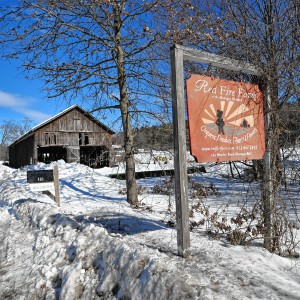 Four Red Fire Farm workers arrested as part of ICE operation in Springfield
Four Red Fire Farm workers arrested as part of ICE operation in Springfield
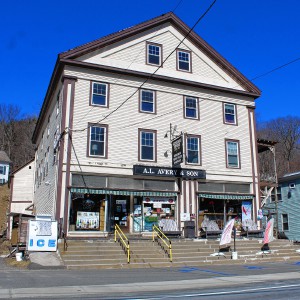 Avery’s General Store building in Charlemont for sale
Avery’s General Store building in Charlemont for sale
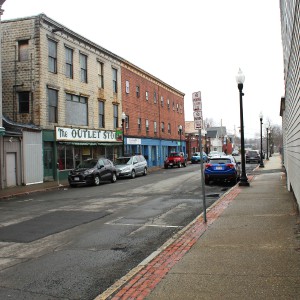 Greenfield seeks renewal of Slum and Blight designation to bring in funds for infrastructure
Greenfield seeks renewal of Slum and Blight designation to bring in funds for infrastructure
 Amherst’s Ryan Leonard signs entry-level contract with Capitals, expected to make NHL debut Tuesday in Boston against the Bruins
Amherst’s Ryan Leonard signs entry-level contract with Capitals, expected to make NHL debut Tuesday in Boston against the Bruins
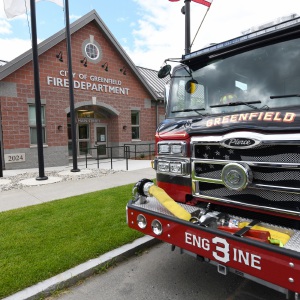 Greenfield Fire Station’s energy use 250% higher than expected
Greenfield Fire Station’s energy use 250% higher than expected
 The ills of a billion-dollar enterprise: The slow-death of the cannabis industry, and what might be done to reverse the trend
The ills of a billion-dollar enterprise: The slow-death of the cannabis industry, and what might be done to reverse the trend
“We have the beginnings of things going on downtown. And I can just see that housing would bring people in,” she said.
Marble, who has lived in town for 10 years, said rehabilitation of Wheeler Memorial Library is important to her. The library at 49 East Main St. has fallen into disrepair and the basement, which already had extremely poor ventilation and relied on ceiling fans and a dehumidifier, was flooded in mid-July. The building also needs a new roof, as the current one leaks regularly, and there is no dedicated staff space. In November 2022, residents quashed a debt-exclusion override by 58 votes at the ballot box, declining to authorize the ability to borrow up to $10.4 million to supplement a $5 million state grant for a renovation project.
“It’s a big issue for me, always has been. But I also feel that our library, if it’s improved the right way, could be used for a lot of other things besides library [functions],” Marble said. “For instance, it could used for the children. It could be used for the seniors.”
Ryan Belliveau said he would like to see the town’s government focus more on infrastructure and essential services, rather than artistic and cultural pursuits.
According to information compiled by Resilience Planning & Design, Orange’s median household income increased by 30% in the past decade, but remains below the $70,383 county average and the $96,505 state average. Twenty-seven percent of the town’s workforce is between 60 and 74 years old, meaning there is a need to attract and retain younger workers to ensure Orange has “a sustainable pipeline of skilled labor to replace outgoing, experienced professionals.”
The town reached a 10-year peak of 1,881 jobs in 2022, indicating a strong recovery after the pandemic. Retail is the largest employment sector in Orange, followed by health care, educational services and manufacturing. While the town’s economy has shown signs of growth, it faces challenges like low labor force participation and higher unemployment rates than the county and state.
The presented plan states that “today’s economy is driven by new and legacy manufacturing businesses, farming, and a vibrant community of local artists and entrepreneurs.”
Reach Domenic Poli at: dpoli@recorder.com or 413-930-4120.

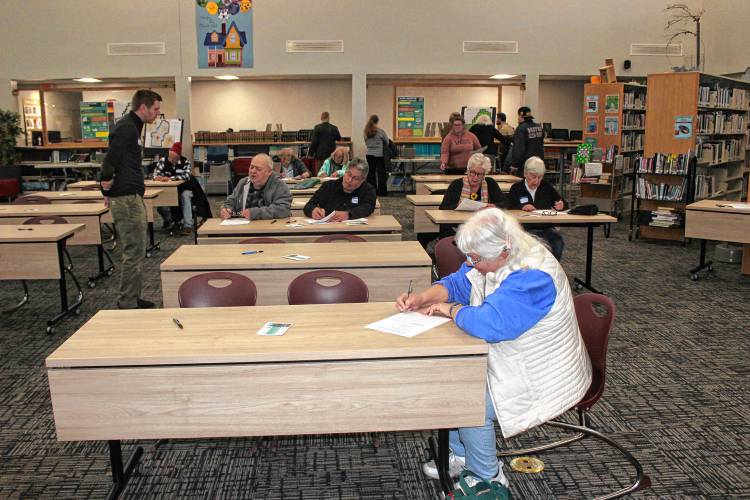
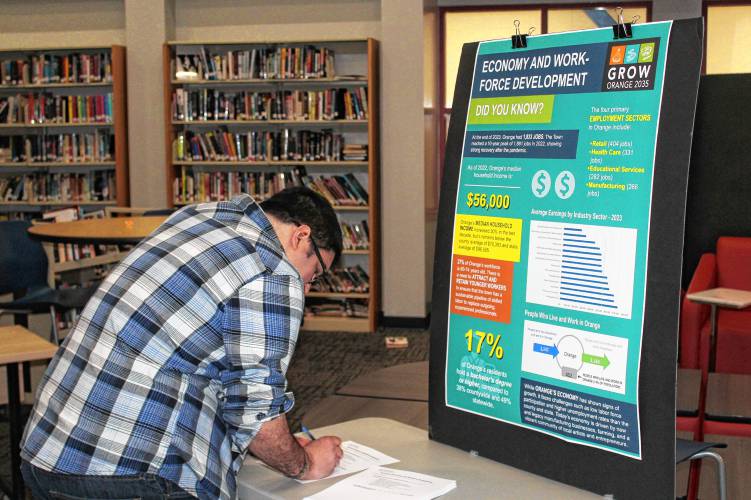
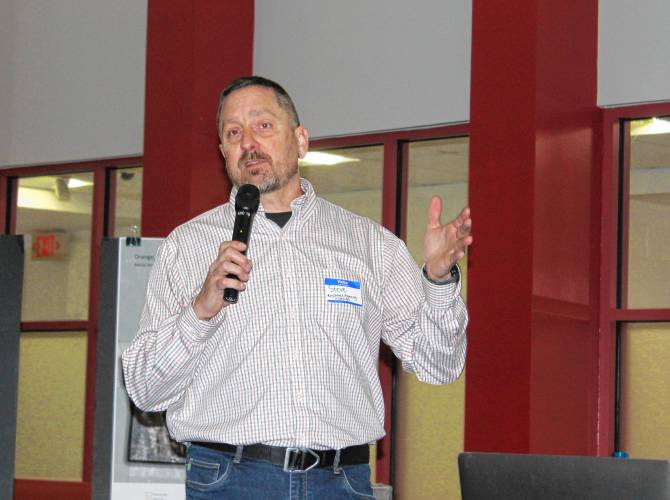





 Stage on Main exhibit displays Athol resident’s work through the decades
Stage on Main exhibit displays Athol resident’s work through the decades Shelburne voters asked to consider opioid fund transfers, CPA uses
Shelburne voters asked to consider opioid fund transfers, CPA uses PHOTOS: Career conversations
PHOTOS: Career conversations
